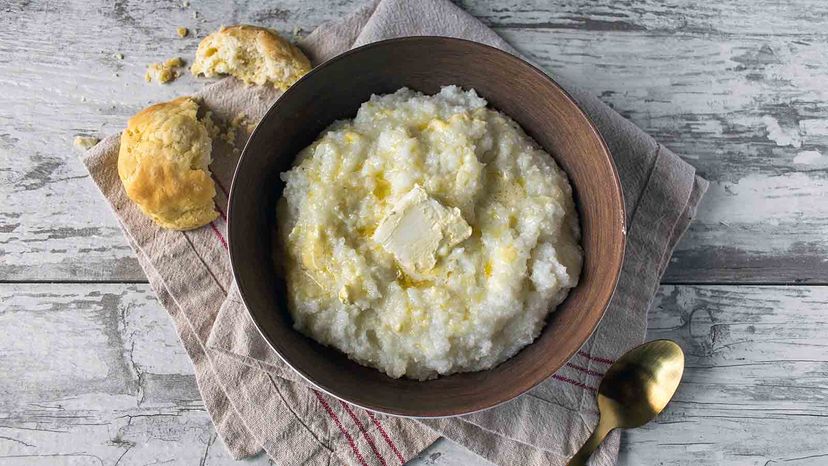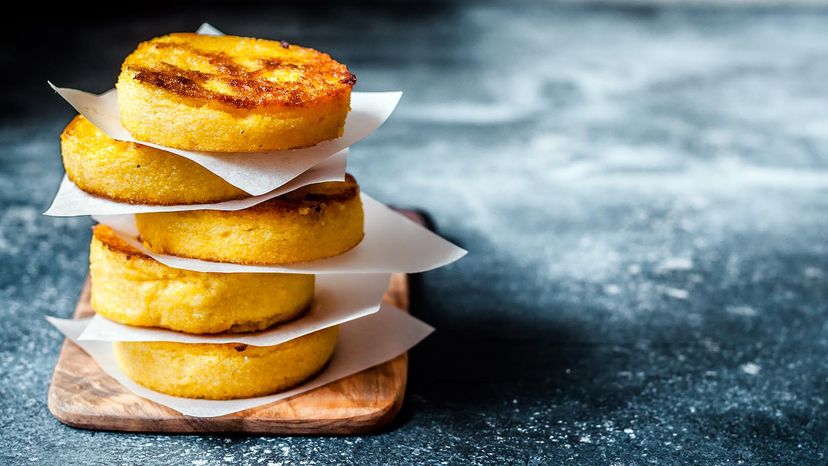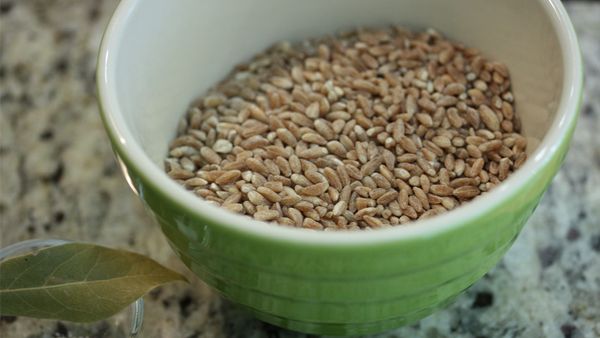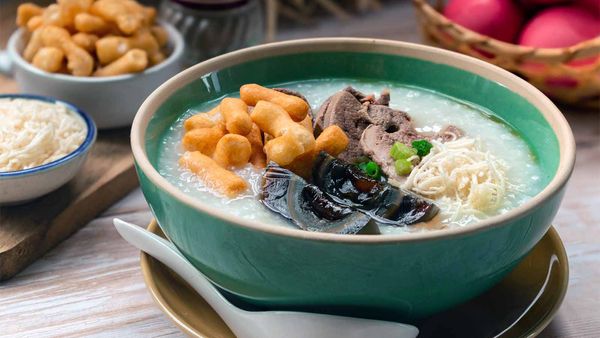So now we know grits are a food fave of the American South, but polenta's roots lie in Northern Italy. Before corn was introduced to Europe following the colonization of the Americas, something similar to polenta was being made with wild grains like farro, spelt, barley and millet.
Like grits, polenta is made of corn. However, polenta is made from flint corn, not dent like grits. Flint corn has a hard, starchy endosperm that gives it more texture than dent corn. It also has a buttery, corn flavor when prepared. Polenta also is typically made with yellow corn, which gives it the warm, golden color.
Polenta's thick, creamy texture makes it ideal as the base of dishes (topped with mushrooms and cheese, for example), or as a side (like deep-fried polenta cakes).
Like grits, polenta is easy to prepare. Your grocery store probably sells it in pre-made tubes (these are perfect for those fried polenta cakes) or you can simply make your own with yellow cornmeal, water and some salt.
Here's how to cook super-creamy polenta.
- Bring 4 or 5 cups salted water to a boil. (You can use broth instead of water, or replace some of the water with milk.)
- Add 1 cup cornmeal, stirring constantly and reduce to a simmer.
- Once the polenta begin to thicken, turn down the heat to low.
- Stir the polenta occasionally, until all the liquid is absorbed and the polenta has a smooth consistency, about 45 minutes.
- Add butter, salt and pepper or cheese to taste.
You can add your coarse ground polenta into the food processor to pulse out any lumps and make sure it's as finely ground as possible before you cook it.



